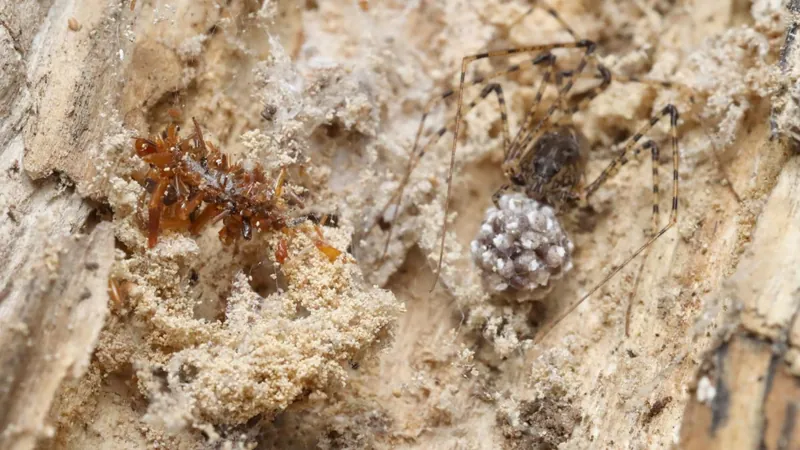
Meet Hawaii's Bizarre 'Bone Collector' Caterpillar: A True Predator in Disguise!
2025-04-27
Author: Ming
Discover the 'Bone Collector' Caterpillar!
In a strange twist of nature, scientists have unveiled a new type of carnivorous caterpillar found exclusively on the Hawaiian island of Oahu, aptly named the "bone collector." This unique insect has a fascinating survival strategy: it adorns its silk case with the remains of its prey!
A Predator Like No Other
Creeping along spiderwebs, this remarkable caterpillar feeds on trapped insects, using their body parts as decorations for its case. According to Dan Rubinoff from the University of Hawaii at Manoa, this behavior is unprecedented in the insect world. "There are other meat-eating caterpillars that do lots of crazy things, but this takes the cake!" he exclaimed.
A Master of Camouflage
Experts believe that the unusual decorations serve as camouflage, allowing the bone collector to feast in peace on the spider’s dinner without drawing attention to itself. Unlike other Hawaiian caterpillars that typically use silk glands to spin protective cases made of lichen and sand, this species takes it a step further—utilizing ant heads and fly wings!
Rarity and Conservation Concerns
Published in the journal *Science*, this remarkable finding reveals that only 62 of these carnivorous caterpillars have been documented in over two decades of research. Researchers noted that these predatory caterpillars are incredibly rare, with a shocking twist: they are known to consume their own kind.
An Ancient Species on the Brink
Dating back at least 6 million years, the bone collector’s lineage predates the very Hawaiian islands themselves, currently residing in secluded mountain forests and facing threats from invasive species. "We really need to prioritize conservation efforts," Rubinoff stressed, highlighting the importance of protecting this extraordinary caterpillar and its environment.
The bone collector stands as a testament to the incredible diversity of life on Earth and the unique adaptations that enable survival in a changing world. It’s a reminder of the wonders of nature—and the urgent need to protect them!




 Brasil (PT)
Brasil (PT)
 Canada (EN)
Canada (EN)
 Chile (ES)
Chile (ES)
 Česko (CS)
Česko (CS)
 대한민국 (KO)
대한민국 (KO)
 España (ES)
España (ES)
 France (FR)
France (FR)
 Hong Kong (EN)
Hong Kong (EN)
 Italia (IT)
Italia (IT)
 日本 (JA)
日本 (JA)
 Magyarország (HU)
Magyarország (HU)
 Norge (NO)
Norge (NO)
 Polska (PL)
Polska (PL)
 Schweiz (DE)
Schweiz (DE)
 Singapore (EN)
Singapore (EN)
 Sverige (SV)
Sverige (SV)
 Suomi (FI)
Suomi (FI)
 Türkiye (TR)
Türkiye (TR)
 الإمارات العربية المتحدة (AR)
الإمارات العربية المتحدة (AR)